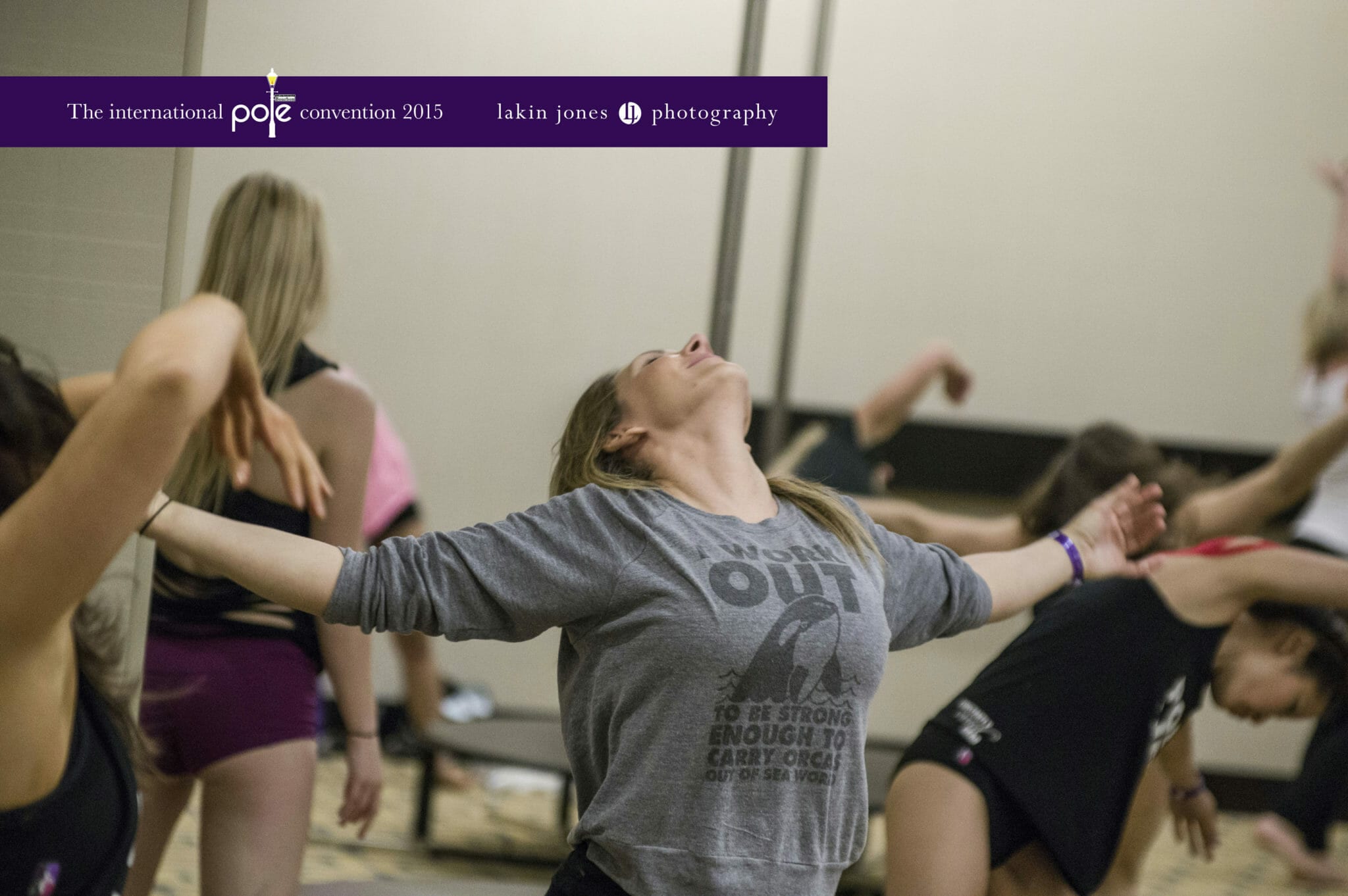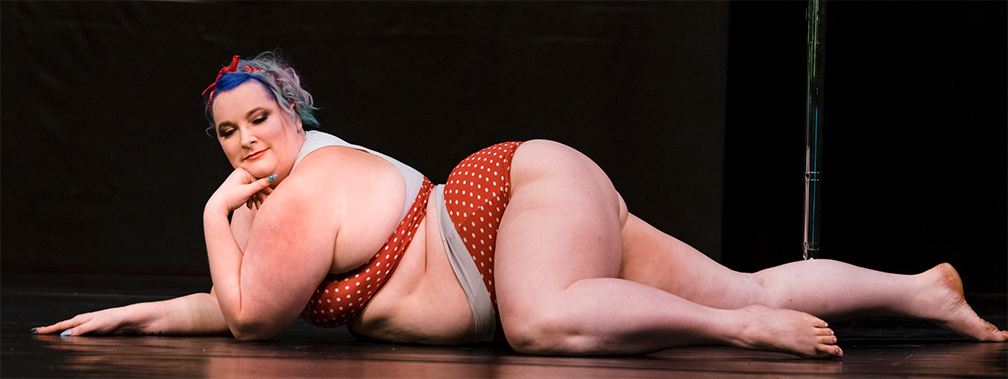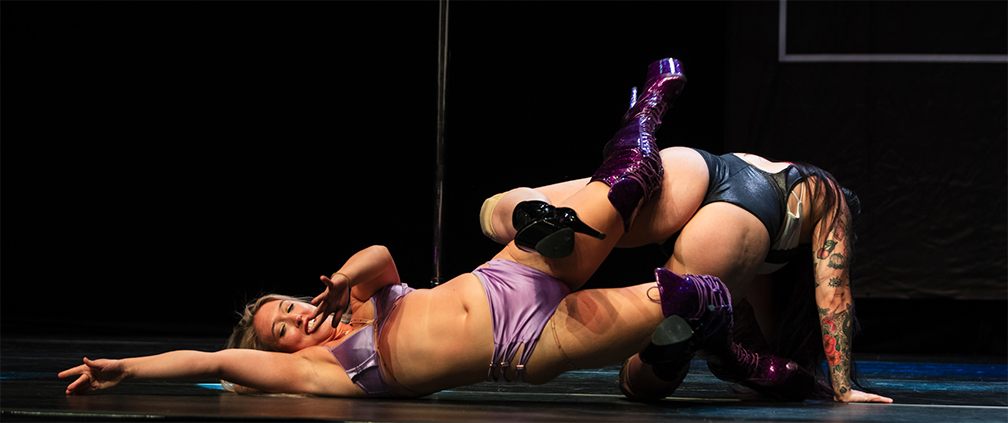
Choreography 101: How to Jump Start the Creative Process
Everyone has that one motivational dance they never forget. You go to it when all other motivation goes out the window. You play it over and over when you dive into the YouTube black hole. You’re friends ask, “What is pole dancing?”, and you show them this video. There’s a reason that this dance is the one that stands out. That artist put some thought into what they performed.
You may be thinking to yourself, “But I could never put something together like that.” You can. Choreography for a pole routine can and will be complicated, frustrating, and an emotional journey for you. It’s not like choreographing a dance (for those of you with dance experience). There are many more elements you have to take into account. Everyone’s creative process is different, but if you are one of those people who feels like they can’t put the pieces together on their own, here are some steps I take to make my vision come to life.
And that is where it all should start – with your vision.
Vision – To physically perform something, you must be able to visualize yourself doing it. This can start with your song choice. Pick something that speaks to you. If you’re doing a dramatic/contemporary style, go with what puts a story in your head or what touches your heart (sound cheesy, I know, but it works!). If you’re going for sexy, pick something that makes you feel sexy, not what someone else looks sexy dancing to. Don’t pick a song that someone else would do, you have to visualize yourself dancing to it. The next step is to drive around (yes, do it), play that song on repeat, and picture the dance from start to finish. This should help you figure out when you want to be on what pole and when you want to be on the floor. You should also start to picture yourself in costume, hair, and makeup. Having a full idea of what you want will help the process even more.
Sequence – As you visualize the piece, start to narrow it down to details. I like to start with sequence. The movement should match the music. You would not put your strongest move at the softest part of the music, would you? Songs are like hills, there are ups and downs, and the dance should match that. This is when I usually start to get the notebook out and write down my ideas. For example, if the song starts soft and slow , then I will match that with soft and slow movement, most likely on the ground and build with the first verse. Usually by the time the verse starts, I’m on one of the poles. You’ll want to time the descent into floor work with the end of the verse or during a bridge in the music (the gaps between verses and choruses or repeats). I usually like to plan my biggest/baddest/favorite move of the piece during the first chorus. That should be the part where you surprise the audience. It’s like unwrapping a present and that’s where you find out what’s inside. The rest of the piece should not descend downhill, though. Do not forget to sequence other exciting moments throughout the rest of the piece. You don’t want them getting bored. After everything is mapped out in my head and on my notebook, it’s time to take it to the poles!
Level of Difficulty/Tricks – Now is when you finalize what is actually happening in the damn thing. First thing is first, do not put something in that you cannot do. Yes, you can put in a trick or transition that you have the tools for and have time to work on. Yes, you can put in a trick that you need to polish. But if you can’t do an aerial dead lift, do not add an aerial dead lift. You catch my drift? You are going to be happier and more successful if you stick to what you know. Not to mention, it is very unsafe to practice moves out of your skill level if you are not ready for them. Now, it’s important to visualize your tricks (on and off the pole) and figure out what you are capable of and what you make look good. Video tape and take pictures of various moves you like to do. ALWAYS video tape your freestyles. This is where you can find some of your original and organic movement! Get a second opinion on what looks good on you. Once you have these pieces, you may or may not have them strung together (sometimes you already visualize the transition, sometimes you don’t). But this is what brings me to one of the most important parts of choreography.
Transitions – This is the most important part of finalizing your choreography. Transitions are what set you apart from the rest. Transitions are, essentially, what takes you from one move to the next. They create that sense of flow and add a creative essence to your dance. To find new transitions, I always suggest looking at Instagram or YouTube videos for inspiration. From there, you can play with the entrances and exits of moves to find new ways to maneuver around them. Look back at the videos you filmed of your freestyles. Sometimes, we fall into something creative by accident. Another way to find a unique transition is to pick a comfortable move, and find as many ways in to and out of it as possible. You can also pick two moves and try to get from one to the other without resorting to your comfortable path. With all this said, transitions must not always be new, but they should be clean! An advanced move isn’t as impressive with a sloppy entrance and a fall out.
Now that you have pieced the puzzle together, you’re ready for the last step.
Cleaning and Polishing – Do not skip this step! I repeat: Do not skip this step! Every time I attend a pole event, I always see someone go out on stage and throw themselves into things without looking smooth and polished. It’s sloppy and it’s not appealing to watch. The crazy part is, this is the easiest step, so there is no need to skip it. How do you clean a routine? Simple! Perform it after every class you take (so you’re warm!), video tape it, and while you’re performing, have someone you trust (a teacher, an advanced peer) take notes for you. Afterwards, get the notes from your friend. Then you can go home, watch your video, and take notes for yourself. Some things to look for when watching yourself are: pointed toes, smooth transitions, not rushing (make sure you can hold a move long enough, otherwise, take it out!), performance quality, confidence in the dance, and of course, nailing those moves. You should save this time for at least two weeks before the show. That way, when you’re about to go on and the nerves hit you, everything will be in your muscle memory!
From my personal experience, these steps have always taken me to a successful performance with low stress and tons of fun on stage (yes, even when competing). Most importantly, remember to be yourself, stick to what you know, and have a good time. 🙂
- Progression to Repel Part 2 - June 22, 2018
- Progression to Repel Part 1 - May 4, 2018
- Ride or Die: My Pole Bestie - February 16, 2018


